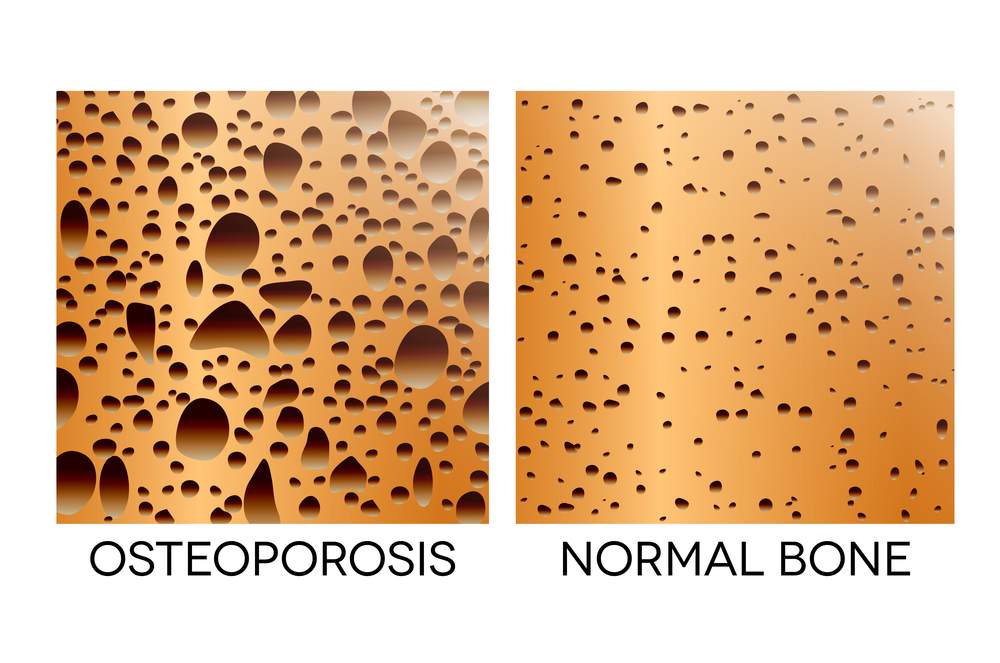The belief that testosterone makes you manly and vitamin D makes your bones strong is widespread among both the general public and the medical community. A recent study has shown that the two biomarkers do not just have one function, but many functions that may be linked to each other.
There are several key reasons to maintain optimal levels of vitamin D and testosterone, which are explored in detail below with accompanying research.
Some Background on Vitamin D
Vitamin D is important because it is a fat-soluble nutrient. It is naturally found in very few foods, such as mushrooms and fatty fish (i.e. sardines, salmon, mackerel). Other foods such as milk contain vitamin D.
If skin is exposed directly to the sun, the body produces high amounts of vitamin D, which is why it’s called the “sunshine vitamin.” However, too much sun exposure can increase the risk of skin cancer.
Many doctors and dietitians recommend supplements to get your vitamin D intake because it’s difficult to find in food and prolonged sun exposure can be harmful.
The liver converts vitamin D to 25-hydroxyvitamin D before it is used in the body. This compound is found in the blood and is the best way to see if someone has enough Vitamin D.
The kidneys take the substance and turn it into 1,25-dihydroxyVitamin D [1,25(OH)2D], which is also known as calcitriol, the active form of vitamin D. A hormone is a chemical that is produced by an endocrine gland and then carried in the bloodstream to another part of the body where it has an effect. Calcitriol is a form of vitamin D that is considered to be a hormone because it is produced by an endocrine gland and then carried in the bloodstream to another part of the body where it has an effect.
Vitamin D in the Body
Vitamin D is usually known for helping keep bones healthy and for aiding the body in absorbing minerals like calcium and magnesium. However, recent research has found that this biomarker also regulates cell growth and the immune system, while also maintaining neuromuscular and cardiovascular health.
Having an optimal level of vitamin D is important for athletes as it helps with muscle growth, power, and cutting down on body fat.
Despite the many beneficial functions of vitamin D, deficiency is still very common. In 2011, it was estimated that 25% of Americans were at risk for vitamin D inadequacy and 8% of Americans were at risk for deficiency.
While too little vitamin D can have negative effects, too much vitamin D can also cause problems. For example, exposure to too much sunlight or taking too high of a dose of vitamin D supplements can lead to kidney problems and nausea. Laura Ingalls is just one of the InsideTracker users who have experienced joint pain as a result of taking in too much vitamin D.
Testosterone: Critical for Performance and Health
Both men and women produce the steroid hormone testosterone. In men, testosterone is produced during puberty, which leads to the development of secondary sexual characteristics, such as body hair and a deeper voice.
Both men and women need testosterone to help increase bone strength, stimulate the development of muscle mass and strength, and improve libido and mood.
Testosterone helps athletes of both genders recover from injury and stimulate red blood cell production.
Testosterone is found in the bloodstream either bound to proteins or as free testosterone. Testosterone can be attached to the proteins albumin or sex hormone-binding globulin. This is known as “bound testosterone.” These proteins transport testosterone throughout the body. This means that while it is present in the body, it does not have an effect on the cells. Almost all of the testosterone in your body is bound to proteins.
The rest of the hormone circulates in the blood, where it can have an active biological effect. This portion is known as “free testosterone” (FT). While relatively small in proportion to the rest of the body, free testosterone is critical to maintaining optimal performance and health. The amount of testosterone that is bound to proteins and the amount that is free are referred to as “total testosterone” (TT).
Testosterone in the Body
Knowing your testosterone levels is crucial for many reasons. There is a link between low testosterone levels in men and infertility, irritability, and erectile dysfunction.
Both men and women can experience a variety of cardiovascular diseases and mental health concerns such as depression when they have low testosterone levels.
Testosterone is a key factor in performance because it aids in the body’s ability to recover, and low levels of testosterone may result in lessened fitness gains and a higher likelihood of injury. When a woman’s testosterone levels are too high, it can lead to sexual problems. If your testosterone levels are low, you should try to increase your recovery time if you are overtraining, or lift weights if you are not already exercising. Additionally, you should check if you are deficient in magnesium or zinc, and eat more animal protein.
Evidence of a Possible Connection Between Men’s Testosterone and Vitamin D
There is a reasonable amount of research that suggests that there is an association between adequate levels of vitamin D in the body, as measured by the 25(OH)D, and the total testosterone (TT).
The 2012 study showed that levels of 25(OH)D and TT and FT were all positively associated. The researchers observed that this association was strongest at lower levels and began to level off at higher levels. This means that the link between higher levels of vitamin D and testosterone levels is only present when vitamin D levels are too low.
Another study found that TT, FT, and 25(OH)D were all positively correlated in middle-aged men. The study also found that subjects with higher levels of testosterone had, on average, 15% more vitamin D than those with lower levels of testosterone.
Scientists have also investigated the relationship between serum 25(OH)D levels and testosterone in young, active men. This is because vitamin D plays a key role in optimal athletic performance.
A 2015 study found that higher serum vitamin D concentrations were associated with higher total testosterone levels. The results suggests that people who are highly active, such as military personnel and athletes, may be able to improve their low testosterone levels by optimizing their vitamin D levels.
Vitamin D is an essential nutrient that is necessary for bone health and helps to prevent osteoporosis, which is a condition where bones are weak and easily broken. It also supports healthy nerve and muscle function. About 1 billion people worldwide have vitamin D deficiency, while 50% of the population has vitamin D insufficiency. (Sizar, 2020).
What exactly does this have to do with testosterone?
The signs and symptoms of low testosterone can be similar to those of a vitamin D deficiency. For example, erectile dysfunction and decreased libido, which can be caused by low testosterone levels, can also be caused by depressed mood from vitamin D deficiency.
Other parallel symptoms between low testosterone and vitamin D deficiency include (Rivas, 2014; Holick, 2011):
- Weakness
- Fatigue
- Decreased bone and muscle strength
It is recommended that people who have low levels of testosterone or vitamin D confirm these levels with a blood test. For most people, it is best to address each level individually.
Can taking vitamin D supplements raise my testosterone levels?
There is no clear understanding of the relationship between vitamin D and testosterone. However, some studies have suggested that taking vitamin D may have an effect on testosterone levels in some individuals.
A study was conducted that looked at middle-aged men who had low levels of both vitamin D and testosterone. After taking vitamin D supplementation, both the vitamin D and testosterone levels of the subjects improved (Pilz, 2011). However, research also found that healthy, middle-aged men with normal testosterone levels had no changes after taking vitamin D supplements. A different study found that healthy young men didn’t have any changes in their testosterone levels after taking vitamin D supplements.
In a study of both male and female athletes, it was found that taking vitamin D had no effect on testosterone levels – even for those with low levels of vitamin D. The conflicting data makes it difficult to support the use of vitamin D to increase testosterone levels.
What to do if Testosterone Levels are Low
If you think you may have low testosterone, the first step is to see a healthcare provider to have your levels checked.
A healthcare provider may ask questions about symptoms, perform a physical exam, and order a blood test to measure the levels of testosterone in your blood, as well as the levels of other hormones that can affect testosterone levels, such as follicle-stimulating hormone (FSH) and luteinizing hormone (LH).
What causes low testosterone?
While testosterone is most commonly associated with men, it is also an important hormone for women. Testosterone supports women’s health in a variety of ways. The hormone testosterone is crucial for male characteristics such as muscle size and strength, bone strength, sex drive, and sperm production.
It is believed that for females, testosterone supports healthy ovaries, bone strength, and libido as well.
As men age, testosterone levels drop. This can cause a condition called hypogonadism if the levels drop too low. Around 40% of adult males in America have low testosterone.
Liver disease, cancer treatments, and some brain tumors can contribute to low testosterone.
What treatments are there for low testosterone?
The treatments for low testosterone levels include taking testosterone replacement therapy (TRT) or medications that can help to increase your body’s natural testosterone production (such as HCG, clomiphene, and anastrozole).
Testosterone therapy can come in many forms, such as gels, patches, or injections. This therapy provides your body with extra testosterone that it cannot produce on its own. It’s not without side effects, however.
If you have low testosterone, your healthcare provider may want you to try testosterone therapy, or they may suggest waiting a few months and then getting your levels retested.
Is testosterone replacement therapy safe?
Although many of the negative beliefs about side effects of testosterone therapy have been disproven, the treatment still faces a lot of controversy.
A study by Morgentaler in 2016, testosterone therapy does not increase the risk of prostate cancer or cardiovascular diseases, contrary to what was previously believed. Most people who have low testosterone levels can safely and effectively use testosterone therapy. However, there are some potential side effects to be aware of, which include:
- Acne
- Breast tenderness or enlargement
- Increased red blood cell count
- Edema or swelling in the extremities
- Testicular shrinkage
- Infertility or decreased sperm production
Members of the transgender community who are considering starting testosterone replacement therapy should discuss their plans for fertility with a healthcare provider beforehand. There are alternative treatments that can be offered to men who are interested in preserving fertility and who have hypogonadism.
Alternative Therapies For Low Testosterone:
Although they are not approved by the FDA, these alternative treatments can be prescribed by a healthcare provider to treat low testosterone. These treatments have been shown to be effective in increasing testosterone levels.
HCG is a treatment for hypogonadism that can help improve fertility. HCG is a hormone that helps the body produce more testosterone. In general, hCG causes fewer side effects than TRT, but you’ll have to inject it more often, and it may cause your testicles to grow larger.
Anastrozole is another treatment for low testosterone. The medication belongs to a class of medications called aromatase-inhibitors. Aromatase-inhibitors work by blocking testosterone from being converted to estrogen, which is a normal bodily process. Anastrozole has been found to increase testosterone levels, and there have been reports of improved muscle strength and sexual desire. A possible side effect is decreased bone density.
Clomiphene is a medication that works by stimulating the production of a hormone in the brain that tells the body to produce more testosterone. This is cost-effective and has been shown to increase testosterone levels in men. Taking clomiphene actually resulted in fewer side effects such as less breast tenderness and skin problems.
Vitamin D and Testosterone: Not Just for Men
There is a direct relationship between vitamin D and testosterone levels in women, according to scientists. In a recent study, researchers observed a positive, significant correlation between serum 25(OH)D concentrations and total testosterone levels in women. The evidence suggests that higher levels of vitamin D may help to improve testosterone levels, but more research is needed to understand how this occurs.
Conclusion
You could have low testosterone if you’ve been feeling run-down or struggling to finish a workout. This could all be regular wear and tear, but it could also be a sign of low testosterone.
There are a few different ways to treat low testosterone, and one option is to get an extra dose of vitamin D. But can taking vitamin D supplements boost your testosterone? While some people with both vitamin D and testosterone deficiency may see an increase in testosterone when taking vitamin D supplements, the majority of people will not see a significant difference. A deficiency in vitamin D increases your risks for many health conditions.
READ MORE: 9 Foods To Eat To Get More Vitamin D
Purium offers Revive-It-All as an all-natural “turn back the clock” formula for people looking to fight off the signs of aging – based on a formula by renowned researcher Dr. Bruce Ames. A scientifically combined proprietary blend of herbs and whole foods designed to help improve circulation, cognition, memory, and other age-related degeneration.









